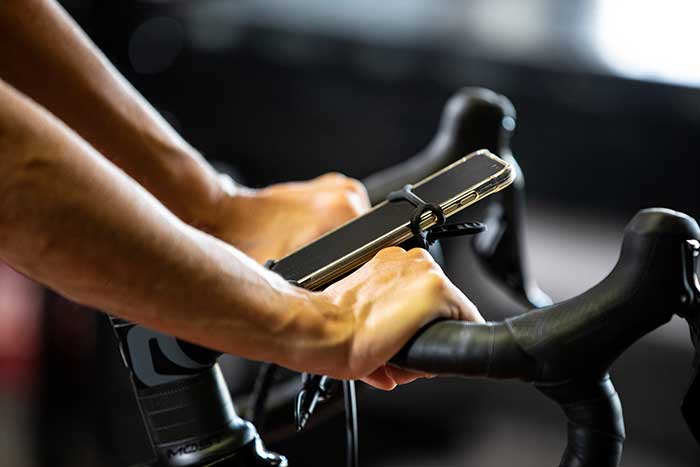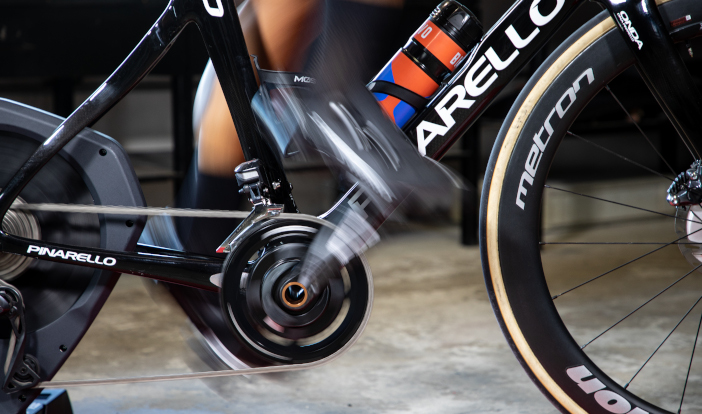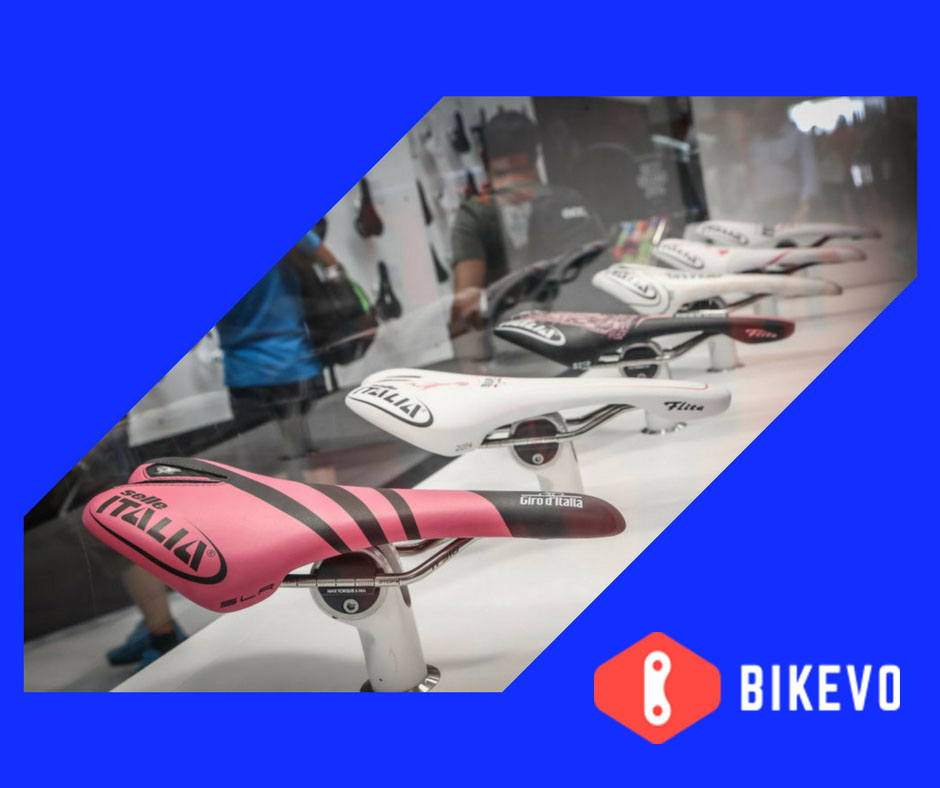One of the questions I hear most often is “what kind of saddle would you advise me?”
One of the questions I hear most often is “what kind of saddle would you advise me?”. Let’s start from the assumption that the choice of saddle is very personal and necessitates a test drive (in other words to actually sit on the saddle) to see if you are compatible. It is also true that an expert who understands the physiological and anatomical fundamentals can point towards the best saddle.
The first distinction that should be made is between a flat saddle and a “curved” saddle.
Flat saddles
As you can see from the photo, when looking at this saddle from the side you see a straight line. This saddle on the one hand, allows you to move from the front to the back without having to change the rotation of the pelvis. On the other hand, this form limits the movement of the rotation (front and back) of the pelvis, with related consequences.

“Curved” saddles
From the side, this kind of saddle can have a wave like profile (such as SMP) or a scooped-out profile (such as Specialized Power). This form limits the possibility of moving towards the front or back of the saddle (some more than others) but helps the pelvis to rotate frontwards, namely to help the pelvic anteversion.
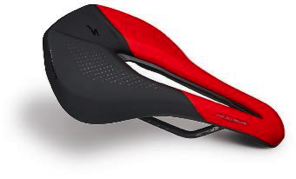
Another category that is gaining more popularity are the truncated (or anatomical) saddles, mainly used in triathlon. They tend to distribute the pressure to the bone structures rather than the soft tissues. Examples are the Triton / Mistyca, or ISM Adam in all its variants, the "T" of SMP in its various frameworks, or even COBB.
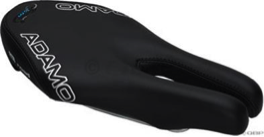
Having discussed the various types very quickly - and we will be returning to this topic later - we will now take a closer look at the main topic of this post: how do you adjust a saddle?
Our objective is always to give useful information to help a better understanding of what has been done to your bike and how an adjustment can help you ride better and faster and protect the body. Basically, if we feel natural and relaxed on the bike it will also be more easy for us to ride faster.
A good saddle can become an obstacle when positioned badly. The first thing to do should be to check the saddle and make sure it does not point upwards. A saddle tilted backwards will force your pelvis in retroversion and cause an inversion of the lumbar lordosis. Do you remember when your school teacher told you to sit upright? Or your mom not to slouch on the couch? Or when in the car after 2-3 hours your back started to hurt? This is exactly that position. So besides being in pain, with the passing of time you can damage some structures, as well as lose the effectiveness of your pedal stroke. Cycling with the pelvis in retroversion means inhibiting the gluteus, a very strong muscle, from working well.
In addition, a saddle set this way will create pressure on the "shadow zone", especially for women as has been demonstrated by Sky Team’s research a few years ago at the Olympic Games.
Therefore, the obvious thing to do is to adjust the saddle so that it slightly tilts forward. Why not straight? Because a slight forward tilt improves the forward rotation of the pelvis and allows for better pedal stroke.
The next question is: how much should the incline be of the saddle?
In changing the saddle’s incline, we always consider:
- how much the cyclist needs to be helped in taking off pressure from the lumbar zone and relieve the perineum
- how much weight the cyclist can support on his hands / arms
- the discipline practiced
- how much time the cyclist is on the bike
- kind of work during daily life (and thus what kind of posture is usually assumed)
The variables are many because everyone of us is unique.
However, some guidelines can be given. (When we talk about tilt, we always mean that the saddle points downward):
"Flat" profile seats: They should always be slightly inclined to give relief to the lumbar area and unload the perineum area. Try to find a point where you feel sustained and allows for adequate weight distribution between the saddle and handlebars. If you are used to having very little weight on your hands, this may
"Curved" profile seats should be further inclined, because if the front points upwards it increases the retroversion, thus worsening the situation as well as making the pedal stroke less effective. The tilting of this saddle is very difficult and depends heavily on the saddle and the specialty practiced. Also in this case you should try to find a good balance between the pressure on the hands and the saddle, and maybe look at your back to figure out how it rotates.
In general, if you enjoy climbing, there are several studies that have found a decrease in the variation of muscle activation (timing and intensity) in the transition from pedaling on flat streets to pedaling uphill. Translated this means better uphill performance (sitting position) and, what should not be overlooked, a feeling of greater comfort.
References
- J Sex Med. 2005 Sep;2(5):596-604. Bicycle riding and erectile dysfunction: an increase in interest (and concern). Huang V1, Munarriz R, Goldstein I.
- Med Sci Sports Exerc. 2003 Feb;35(2):327-32.Bicycle seat designs and their effect on pelvic angle, trunk angle, and comfort. Bressel E1, Larson BJ.
- Br J Sports Med. 1999 Dec;33(6):398-400. Effect of changing the saddle angle on the incidence of low back pain in recreational bicyclists. Salai M1, Brosh T, Blankstein A, Oran A, Chechik A.
- J Strength Cond Res. 2007 Nov;21(4):1300-4. Relationship between cycling mechanics and core stability. Abt JP1, Smoliga JM, Brick MJ, Jolly JT, Lephart SM, Fu FH.
- J Electromyogr Kinesiol. 2011 Oct;21(5):854-60. doi: 10.1016/j.jelekin.2011.05.010. Adjusted saddle position counteracts the modified muscle activation patterns during uphill cycling. Fonda B1, Panjan A, Markovic G, Sarabon N.
- J Electromyogr Kinesiol. 2008 Feb;18(1):116-27. Epub 2006 Nov 22. Muscular activity during uphill cycling: effect of slope, posture, hand grip position and constrained bicycle lateral sways. Duc S1, Bertucci W, Pernin JN, Grappe F.
- Eur J Appl Physiol. 2012 Jul;112(7):2615-23. doi: 10.1007/s00421-011-2236-1. Epub 2011 Nov 13. Change of muscle activation patterns in uphill cycling of varying slope. Sarabon N1, Fonda B, Markovic G.
- Bike Fit – Phil Burt – Bloomsbury Publishing 2014
- https://www.britishcycling.org.uk/knowledge/training/article/izn20160510-Set-up-Women%E2%80%99s-saddle-issues-0

Niklas Quetri
You might also be interested in
